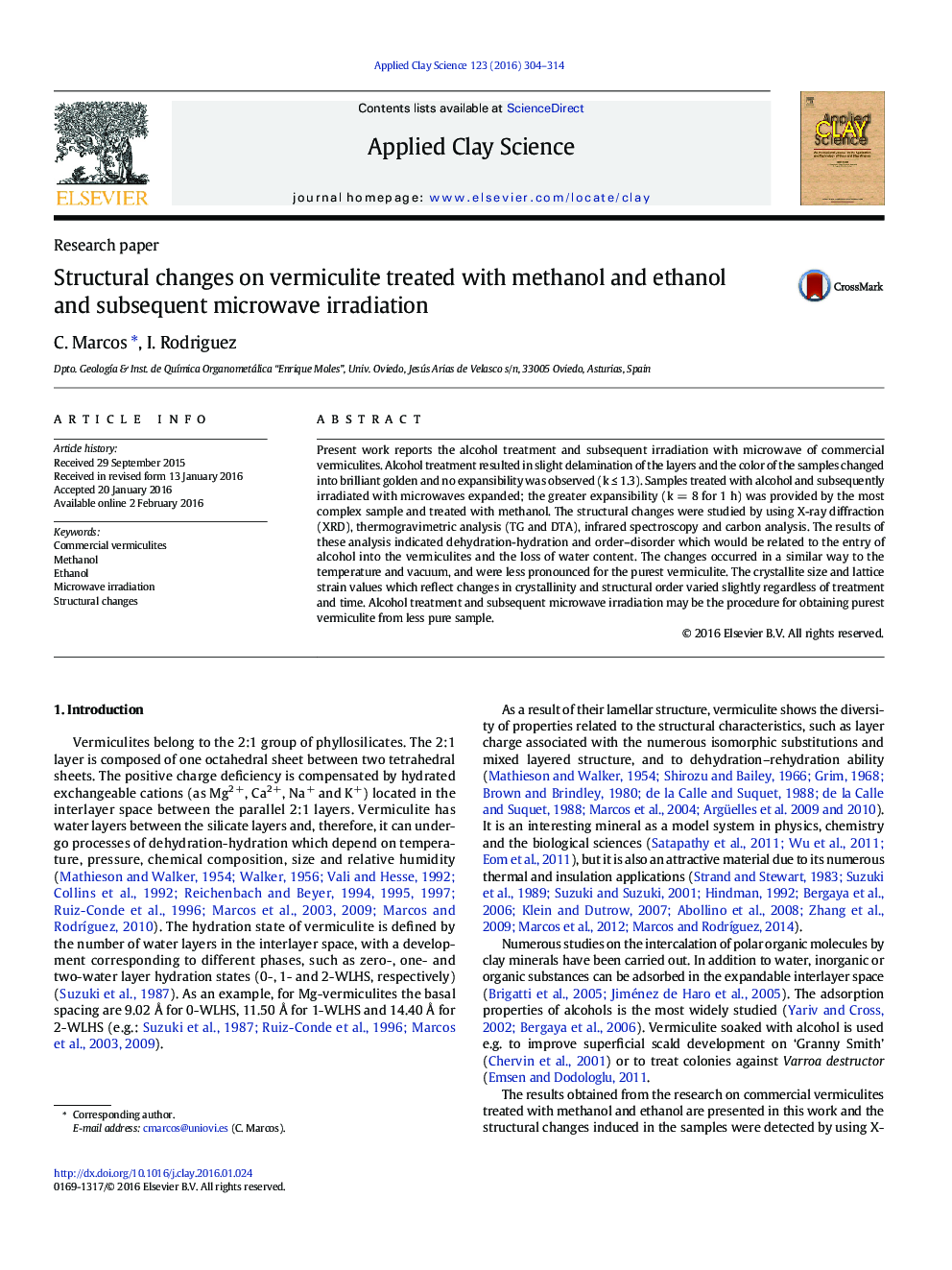| Article ID | Journal | Published Year | Pages | File Type |
|---|---|---|---|---|
| 1694141 | Applied Clay Science | 2016 | 11 Pages |
•Vermiculites treated with alcohol underwent structural changes.•The structural changes could be related to the entry of alcohol into the vermiculites.•The changes were less pronounced in the purest vermiculite.•These changes occurred in a similar way to as temperature and vacuum do.•Alcohol and subsequent microwave irradiation could lead to obtaining purer vermiculite.
Present work reports the alcohol treatment and subsequent irradiation with microwave of commercial vermiculites. Alcohol treatment resulted in slight delamination of the layers and the color of the samples changed into brilliant golden and no expansibility was observed (k ≤ 1.3). Samples treated with alcohol and subsequently irradiated with microwaves expanded; the greater expansibility (k = 8 for 1 h) was provided by the most complex sample and treated with methanol. The structural changes were studied by using X-ray diffraction (XRD), thermogravimetric analysis (TG and DTA), infrared spectroscopy and carbon analysis. The results of these analysis indicated dehydration-hydration and order–disorder which would be related to the entry of alcohol into the vermiculites and the loss of water content. The changes occurred in a similar way to the temperature and vacuum, and were less pronounced for the purest vermiculite. The crystallite size and lattice strain values which reflect changes in crystallinity and structural order varied slightly regardless of treatment and time. Alcohol treatment and subsequent microwave irradiation may be the procedure for obtaining purest vermiculite from less pure sample.
